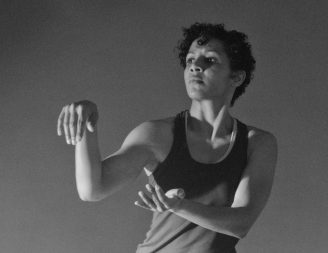For those of us developing strategies to advance the arts and culture, a new program of the City University of New York (CUNY) demonstrates the power of cross-sector collaboration. Announced with fanfare this spring by the Wall Street Journal and The New York Times, the CUNY Dance Initiative connects 20 choreographers and companies to underutilized rehearsal and performance spaces on CUNY campuses.
I believe the project creates value, above all, by contributing to a city where the arts and arts education are more meaningfully one. It not only promises to lift up, simultaneously, the chosen practitioners and participating campuses, but also reminds us that creative lives -- arts training and arts careers -- exist on a continuum. Opportunities abound for revisiting and strengthening this continuum, from our universities to our prekindergarten classrooms, especially as we advance our new mayor's vision for universal arts education and respond to disparities in arts education found by a new comptroller report.
There are broader lessons here about systems integration and the benefits of thinking big. CUNY is able to realize efficiencies of scale and reach New Yorkers across the five boroughs by adapting a viable model to multiple campuses. In the future, I hope even more campuses participate. I also hope some of the project's organizing principles may be applied to other spaces New Yorkers use every day, from the libraries, parks and streets to grocery stories and banks. There are some doing this key work -- for example, Spaceworks, Chashama, and No Longer Empty -- and there should be more.
How about a New York with arts and culture for everyone, 24/7, and everywhere? And I don't mean a New York where the arts are merely consumed, but where creation, excellence and risk-taking are infinitely expanding.
I am not just advocating big thinking. Some ideas are a dime a dozen, some are better than others, and some of the best are data-driven. The CUNY project responds to "We Make Do," an Exploring the Metropolis study commissioned by The Andrew W. Mellon Foundation, which cited the critical need for affordable rehearsal space and identified CUNY as a source. Similarly, Spaceworks was informed by a feasibility study led by Forsyth Street Advisors funded by the Charles H. Revson Foundation, which highlighted the opportunity to transform underutilized public and private facilities into cultural workplaces. I commend and advocate this kind of investment in action-oriented research.
Where does the money come from? The CUNY project is realized by leadership support from The New York Community Trust and the Mertz Gilmore Foundation, two local funders committed to dance. There are lessons here about the power of institutional funding in realizing cross-sector collaboration and how a few funders, working together, can make an impact. The opportunity for high-impact investment is also underscored by recent Dance/NYC research. I invite anyone considering entering the philanthropic market, or not yet funding arts and culture, to do so. And for those of you already committed to funding education, please remember the arts and arts education are one.
The CUNY Dance Initiative is well-timed, as we welcome a new administration and look to the future. Today, I am advocating thinking across sectors, systems and stakeholders, and executing solutions for the arts and culture that harness un- or under-tapped opportunities from new angles and with new resources. This is an approach to management and advocacy that can serve New Yorkers now and going forward. What I am saying is not all built in to the CUNY project, but I am inspired by it and looking forward to the lessons it may offer all of us going forward.
Disclaimer: The CUNY Dance Initiative was featured as a case study at Dance/NYC's 2014 Symposium and its originator Jeffrey Rosenstock has joined Dance/NYC's NEW YORKERS FOR DANCE campaign, featuring statements on why dance matters.

